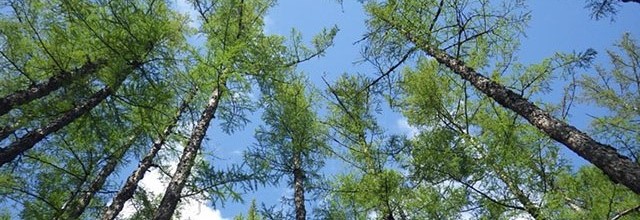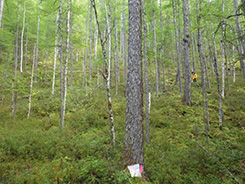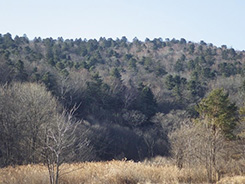Home > International Partnerships > Collaborative Research > Development of Holistic and Sustainable Forest Resources Informatics Using Satellite and Ecological Data Analyses in Far East Russia
Update:November 18, 2020
Main content starts here.
Development of Holistic and Sustainable Forest Resources Informatics Using Satellite and Ecological Data Analyses in Far East Russia

1. Partners
(Russian side)
Institute of Geology and Nature Management, Far East Branch of the Russian Academy of Sciences
Primorskaya State Academy of Agriculture
(Japan side)
Field Science Center for Northern Biosphere, Hokkaido University
Chiba University
Institute of Industrial Science, The University of Tokyo
Nihon University
Shinshu University
Kyoto University
2. Research Period
FY 2017–2019 Funded by Agriculture, Forestry and Fisheries Research Council
3. Lead Researcher
MATSUURA, Yojiro (Center for International Partnerships and Research on Climate Change)
4. Background
The degradation of forest resources in Far East Russia is an urgent environmental issue. However, there have been no quantitative analyses of changes in the forest biomass and no estimates of carbon sequestration in this region.
5. Research Goal
The main goals of this research were to establish methods for undertaking a forest resources inventory (above- and belowground) and to develop a system for performing large-scale evaluations using satellite image analysis.
6. Research Strategy
We conducted field surveys in the summer of 2018/19 at two representative research sites in Far East Russia: Zeya Nature Reserve (53°N, 127°E) in northern Amur Oblast and Kaimanovka Experimental Forest (44°N, 132°E) in southern Primorsky Krai (Fig.). At each site, we analyzed the total biomass, fine root biomass, soil carbon storage, and fire history, and undertook a tree-ring analysis. In addition, a remote-sensing team conducted image analysis to record any fires and assess the recovery from them and also aimed to detect the timing of soil thaw in the spring to forecast the fire frequency and severity during the dry summer season.


Fig. Photographs of a larch (Larix gmelinii)-dominant forest in Zeya Nature Reserve (left) and the mixed forest in Kaimanovka Experimental Forest (right)
7. Scientific Achievement
All of the samples that were obtained in the field were certificated and permitted to be removed from Russia in summer 2019, and most of the woody samples are still being analyzed. Since no soil samples were allowed to be taken from Russia, we asked both Russian institutes to analyze their carbon contents.
We detected a sporadic permafrost table in Zeya Nature Reserve, which affected both the forest structure and growth. A comparison of burned (in 2003) and control sites showed that fire did not have any obvious effects on soil organic carbon storage but resulted in a large increase in the accumulation of coarse woody debris and litter on the forest floor. Reconstruction of the fire history over the past 1500 years and detection of the change in fire frequency through the analysis of sediment samples from Zeya Nature Reserve showed that there was a more than 300-yr interval between large fires until around AD 1800, after which this decreased to approximately 60 yrs.
The burned forest biomass was estimated over a large target area (40–55°N and 120–145°E), and the dryness index and land surface condition were also examined, allowing us to develop a long-term forest carbon model for the period 2006–2017.
8. Applications
The developed methods and the estimation results and model output will contribute to the sustainable management of forest resources in Far East Russia.
9. Publications
Semyon B, Evgeniya A, Makoto K (2018) Fire-derived charcoal might promote fine root decomposition in boreal forests. Soil Biology and Biochemistry 116: 1–3.
Copyright © Forest Research and Management Organization. All rights reserved.
